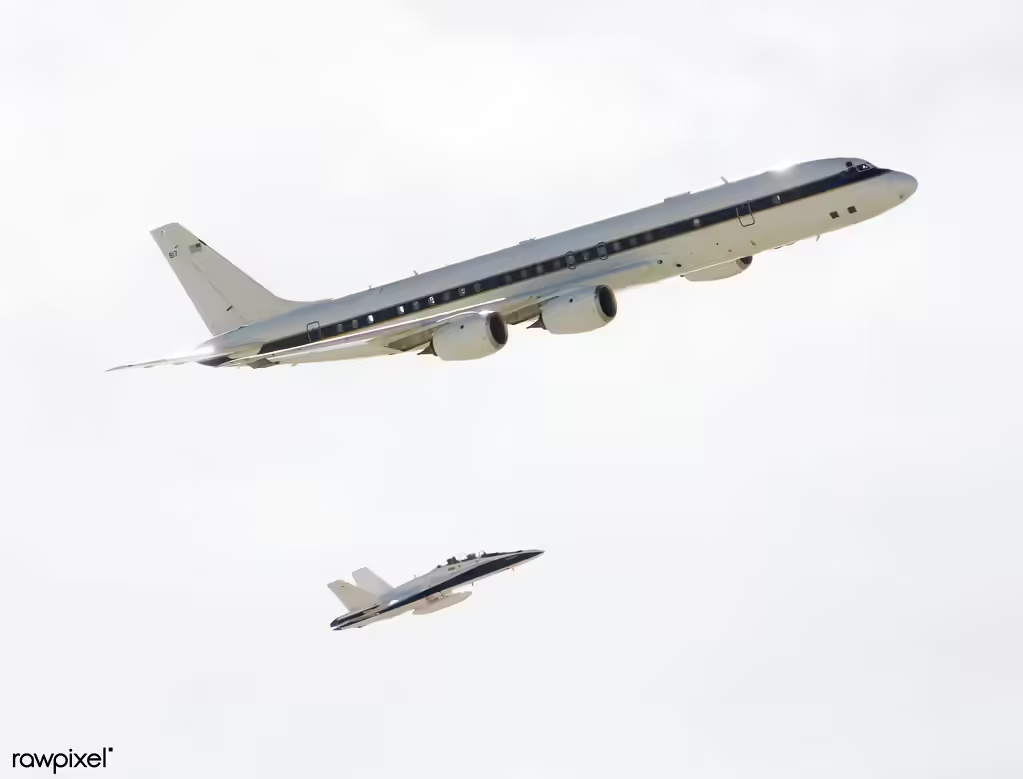
Table of Contents
A pioneer of long-range, four-engine narrowbody aircraft, the Douglas DC-8 was first introduced in the late 1950s. When jet engines were first introduced into commercial aviation, the Douglas DC-8 became the Boeing 707’s main competitor and competitor.
Between 1958 and 1972, when it was still in production, more than 550 DC-8s were shipped to various customers around the world. In this regard, we explore five fascinating facts about one of the first jet-powered, long-range narrowbody aircraft.
DC-8 was the manufacturer’s first aircraft to have a jet engine
Douglas dominated the post-World War II commercial aviation industry in North America with a series of piston-powered aircraft that included the DC-2, DC-3, DC-4, DC-5, DC-6 and DC-7. Initially, McDonnell Douglas was hesitant to enter the jet aircraft business, although it was commercially successful.
The tipping point was the delivery of the first jet to Pan American, a Boeing 707-807, in 1958. The incident prompted Douglas to reevaluate the state of jet development, and Pan American began daily transatlantic jet flights between New York and Paris that fall.
Douglas offered his approval for the DC-8 design in 1955. The DC-8 then made its maiden flight on May 30, 1958, marking the beginning of narrowbody operations. Both Delta Air Lines and United launched DC-8 flights with the aircraft in 1959.
The DC-8 was the first commercial jet to reach Mach 1.0
In 1961, during a test flight, the Douglas DC-8 became the first commercial aircraft to break the sound barrier and achieve Mach 1.0, which showed significant advantages in its characteristics. It is interesting to note that this achievement was achieved by the Soviet-built Tupolev Tu-144 and the well-known Concorde, which achieved this speed in a test flight only in 1969. A DC-8 (registration N9604Z) accomplished this remarkable feat. . A feat that surprised many.
The test pilot of the DC-8 came up with a plan to increase the plane to supersonic speed so that it could maintain that speed without breaking up. The goal was to demonstrate this capability before Boeing attempted comparable performance, thus distinguishing the DC-8 as an excellent alternative to the Boeing 707.
The DC-8 was built in seven variants
The Series 10, 20, 30, and so on, up to the Series 70, were medium- and long-range flying versions of Douglas’ DC-8 series. There were few differences between the original and standard versions, the Series 10 and 20, mostly related to engine choices. The first versions were the Series 30 and 40 with 17,500 lbs-thrust turbojet engines.
More powerful turbofan engines with 18,000 lbs thrust and longer range were introduced in the Series 50. Both windowless all-cargo and passenger-cargo versions were offered for this configuration. The Series 50 greatly increased the range of the original Series 10, which was only 3,760 nautical miles, to 5,855.
The Douglas DC-8 Series 60 featured an elongated fuselage, around 37 feet longer than the original model. In an all-economy passenger configuration, the DC-8-61 could accommodate 259 passengers. To enhance the range and reduce noise, the manufacturer re-engined the Super 60 Series, introducing the Series 70, replacing Pratt & Whitney engines with CFM56s.
Four DC-8s are in active service
The DC-8 aircraft is still in use today despite its outdated narrowbody. Four Douglas DC-8s are currently in service, based on data from ch-aviation.
The two DC-8s, with an average age of 53.6 years, are in service with cargo carrier Trans Air Cargo Services of the Congo. Additionally, Skybus Cargo Charters, a Peruvian airline, operates a single DC-8 in its fleet. NASA is responsible for operating the final operational DC-8, converting it into a flying scientific laboratory for research on Earth as an ecological system.
Still, given that modern twin-engine widebody jets, such as the Airbus A350 and Boeing 787 Dreamliners, can go much farther and more efficiently than this aircraft, it’s not surprising that no passenger carriers now fly this model.
ATI – the last operator of Douglas DC-8s with passenger seats
In early 2013, Air Transport International (ATI), the only airline operating Douglas DC-8s with passenger seats, announced the type’s retirement. Part of the decision to replace them was the purchase of Boeing 757 aircraft.
ATI operated four DC-8s with rear sections for both people and cargo, although primarily cargo carriers. According to Airline Reporter, this particular configuration provided the final opportunity to acquire a passenger DC-8 aircraft in the early 2010s, but only through a special charter arrangement.
READ | 7 Ranking every Boeing passenger jet from worst to greatest
READ | DC-10 : All you need to know about the McDonnell Douglas jet


2 thoughts on “5 Interesting Facts About the Douglas DC-8 in Vintage Quadjet”